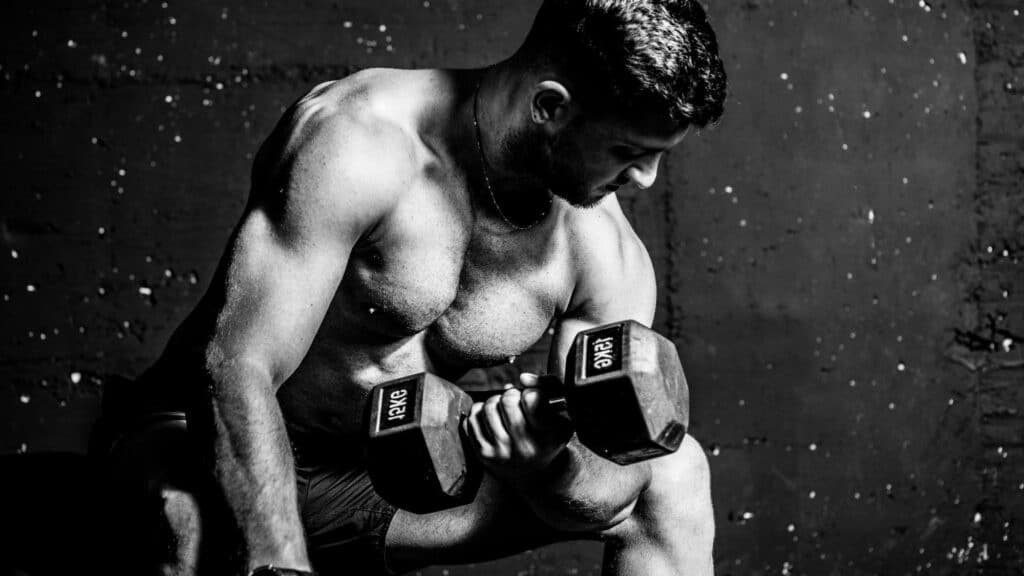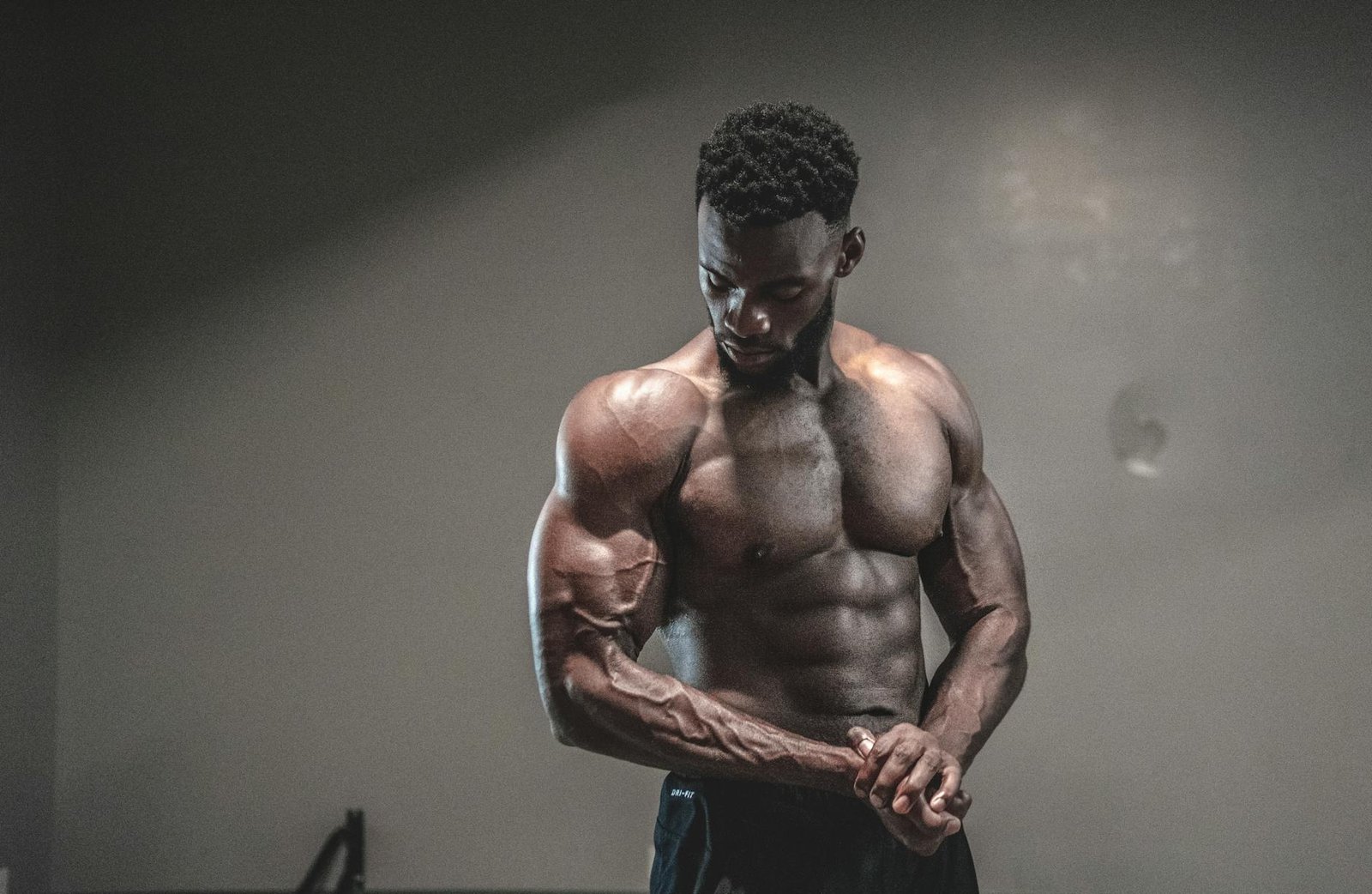Imagine stepping into the gym, ready to push your body to new limits. But what if there was a way to achieve even greater gains without lifting heavier weights or spending hours on end in the gym? Now, let’s dive into blood flow restriction (BFR) training. This game-changing method is currently the talk of the town in fitness circles, turning heads with its innovative approach. Scientists have given this new workout strategy their seal of approval, and it’s making waves among athletes and exercise buffs for its incredible benefits.
BFR training is far from a fleeting fad. Think of it as your secret weapon for pushing past those stubborn workout plateaus, speeding up muscle gain, and stepping up your game across the board. When you carefully limit blood flow to your muscles while working out, you’re unlocking a fresh and powerful way to ramp up the intensity and effectiveness of your exercise routine. Alright, let’s peel back the layers on BFR training and see how it spices up your workout routine.
Table of contents
What is Blood Flow Restriction Training?
At its core, blood flow restriction training involves applying a specialized tourniquet or cuff to the upper portion of your limbs during exercise. These cuffs are crafted to gently limit blood flow, which sets up a low-oxygen zone in your muscles. By reducing the amount of oxygen delivered to your working muscles, BFR training forces your body to adapt and work harder than it would under normal conditions.
How BFR Training Works
When you engage in BFR training, the partial occlusion of blood flow leads to a cascade of physiological responses in your body. As your muscles are deprived of oxygen, they begin to accumulate metabolic byproducts such as lactic acid. When these metabolites pile up, it kicks off a chain reaction that includes sending out signals to unleash growth hormone and other power-packed substances for muscle building.
At the same time, the reduced oxygen delivery to your muscles forces your body to recruit more muscle fibers, particularly the fast-twitch fibers that are responsible for explosive power and strength. So, when you manage to get more muscle fibers in on the action, it’s not just about feeling stronger; your muscles genuinely grow and gain strength. This is a straight-up win for anyone looking to bulk up and boost their power levels.
Different Types of BFR Equipment
To perform BFR training safely and effectively, it’s essential to use the right equipment. There are several options available, each with its own advantages and limitations:
- BFR Bands: These elastic bands are designed to be wrapped around your limbs, providing a customizable level of pressure. Because they’re easy on the wallet, simple to carry around, and a breeze to use, beginners love them. Plus, anyone looking to spice up their home workout routines will find BFR training bands just the ticket.
- BFR Cuffs: These cuffs are crafted from tough stuff and come with a cool pneumatic feature. This lets you tweak the tightness to just the right level, making sure you’re comfortable and in control. Sure, they might cost a bit more than BFR bands, but what you’re getting in return is top-notch precision and consistency when it comes to applying pressure.
- Pneumatic Devices: These advanced systems use compressed air to apply pressure to your limbs, allowing for even more precise control over the level of occlusion. They are typically used in clinical settings or by elite athletes who require the highest level of accuracy and reliability in their BFR training.
So, when we dive into what makes BFR training tick, it’s not just about the bands or weights. It’s more like taking a deep look at how our muscles respond under pressure—literally—and understanding that by controlling blood flow, we can kick-start some serious muscle growth without overloading ourselves with heavy lifting.

The Science Behind BFR Training
To really get why BFR training is such a big deal, we need to dive into what makes it tick. It’s all about the special sauce – those behind-the-scenes actions that amp up its power. Now, let’s dive into the nuts and bolts of what makes this training approach so groundbreaking.
Mechanisms of Action
- Metabolic Stress: As mentioned earlier, the partial occlusion of blood flow during BFR training leads to an accumulation of metabolic byproducts in your muscles. When your body goes through metabolic stress, it’s like hitting the go button for muscle growth. This kicks off a series of signals that include pumping out growth hormone and other power-packed compounds essential for building muscles. Pushing your metabolism into overdrive not only cranks up the stress on muscles but also wakes up those fast-twitch muscle fibers. These are the powerhouses behind your explosive strength and speed, jumping into action when you really need that burst of energy.
- Cellular Swelling: The reduced blood flow during BFR training causes your muscles to swell, creating a “pump” effect. Interestingly, when our cells puff up a bit, it seems to kick protein synthesis and muscle growth into high gear – and that’s without needing to lift super heavy weights. When your muscle cells puff up, they kickstart the release of growth factors and other powerhouse substances that drive muscle growth.
- Hormonal Responses: BFR training has been shown to elicit a significant hormonal response, particularly in the release of growth hormone. Studies have found that BFR training can increase growth hormone levels by up to 290% compared to traditional resistance training (Takarada et al., 2000). Seeing a boost in growth hormone can really kick things into high gear by ramping up muscle development, melting away fat, and speeding up recovery overall.
Physiological Adaptations Induced by BFR
- Increased Muscle Fiber Recruitment: As mentioned earlier, the reduced oxygen delivery to your muscles during BFR training forces your body to recruit more muscle fibers, particularly the fast-twitch fibers that are responsible for explosive power and strength. So, when you’re working out, and your muscles call in extra fibers to join the party, it’s not just for show. This teamwork leads to better muscle performance and before you know it, those gains in both size and strength start to really show up.
- Enhanced Muscle Protein Synthesis: The metabolic stress and cellular swelling induced by BFR training have been shown to stimulate protein synthesis and muscle growth. Studies have found that BFR training can increase muscle protein synthesis by up to 56% compared to traditional resistance training (Fujita et al., 2007). Boosting the process of muscle protein creation can significantly increase both muscle size and strength as time goes on.
- Improved Capillary Density: BFR training has been shown to improve capillary density in the muscles, which refers to the number of small blood vessels that supply oxygen and nutrients to the muscle fibers. With more capillaries crisscrossing your muscles, your blood has superhighways to zoom through, delivering oxygen faster and boosting both your stamina and performance.

Comparison to Traditional Resistance Training
While BFR training shares some similarities with traditional resistance training, there are some key differences that set it apart. One cool perk of BFR training is it lets you bulk up and get stronger without having to lift super heavy weights. That’s why BFR training shines as the go-to choice for folks mending from injuries or those who might find lifting heavy weights a bit too much.
Another key difference is the level of metabolic stress and cellular swelling induced by BFR training. While traditional resistance training can certainly lead to metabolic stress and cellular swelling, the effects are more pronounced with BFR training due to the partial occlusion of blood flow. Pumping up the metabolic stress and making your cells swell could be your ticket to beefier muscles and stronger lifts as time marches on.
Key Takeaway
- BFR training involves partially occluding blood flow to the muscles during exercise, creating a hypoxic environment that forces the body to adapt and work harder.
- The metabolic stress, cellular swelling, and hormonal responses induced by BFR training lead to increased muscle fiber recruitment, enhanced muscle protein synthesis, and improved capillary density.
- If you’re on the mend from an injury or just can’t deal with lifting heavy stuff, BFR training is a solid pick. It offers the same perks in beefing up your muscles and making them stronger as traditional workouts do, but without all that weight.

Benefits of Blood Flow Restriction Training
So, after diving into the nitty-gritty of BFR training, let’s shift gears and check out the awesome perks it brings to the table for both hardcore athletes and those of us who just love a good workout.
Muscle Hypertrophy and Strength Gains
One of the most significant benefits of BFR training is its ability to promote muscle hypertrophy and strength gains, even with relatively light loads. Studies have shown that BFR training can lead to similar gains in muscle size and strength as traditional high-load resistance training, but with loads as low as 20-30% of one-repetition maximum (1RM) (Loenneke et al., 2012).
That’s why BFR training hits the spot for those on the mend from injuries or who might find lifting heavy weights a bit too much. With BFR training, you’re not just getting stronger using lighter weights; you’re also giving your body a break. This means less chance of hurting yourself and bouncing back faster after your workouts.
Improved Endurance and Aerobic Capacity
In addition to its muscle-building benefits, BFR training has also been shown to improve endurance and aerobic capacity. The hypoxic environment created by BFR training forces your body to adapt and become more efficient at utilizing oxygen, leading to improvements in mitochondrial function and overall aerobic capacity.
Studies have found that BFR training can lead to significant improvements in VO2max, a key indicator of aerobic fitness (Park et al., 2010). Boosting your endurance and aerobic power isn’t just good for bragging rights. It seriously levels up how you perform across a variety of activities, whether you’re hitting the pavement running, pedaling through the countryside, slicing through water in the pool, or working with your team to score that winning goal.
Faster Recovery Times
Another significant benefit of BFR training is its ability to accelerate recovery times. The increased blood flow and metabolic stress induced by BFR training have been shown to reduce muscle damage and inflammation, leading to faster recovery between workouts.
Studies have found that BFR training can lead to significant reductions in muscle soreness and damage markers compared to traditional resistance training (Loenneke et al., 2014). Bouncing back faster means athletes and those passionate about fitness can hit the gym more often and push harder, setting them up for bigger achievements as they go.
Increased Growth Hormone Production
As mentioned earlier, BFR training has been shown to elicit a significant hormonal response, particularly in the release of growth hormone. When this growth hormone kicks into gear, it’s like unlocking a treasure trove of perks. Think bulking up those muscles and shedding unwanted fat while also boosting your recovery speed and overall sense of feeling awesome.
Studies have found that BFR training can increase growth hormone levels by up to 290% compared to traditional resistance training (Takarada et al., 2000). Boosting your growth hormone levels can seriously amp up how big and strong your muscles get. Not only that, but you’ll likely see some solid improvements in both how you look and feel overall.
Key Takeaways
- If you’re healing from an injury or just can’t deal with lifting heavy, BFR training could be your new best friend. It’s a game-changer, offering muscle growth and strength boosts similar to the classic lift-heavy approach but without all that weight.
- So, what happens when you dive into BFR training? Your body starts to work smarter, not harder. It learns how to make the most of every breath, enhancing your stamina and boosting the health of your mitochondria for a stronger aerobic game.
- The increased blood flow and metabolic stress induced by BFR training can accelerate recovery times, reducing muscle soreness and damage markers compared to traditional resistance training.
- So, what’s really cool about BFR training is that it kicks off a strong hormone party in your body. This includes cranking up growth hormone levels which helps not only with bulking up those muscles but also melting away fat and bouncing back stronger and feeling better overall.
Implementing Blood Flow Restriction Training Safely
While BFR training offers a wide range of benefits, it’s essential to approach it with caution and under the guidance of a qualified professional. So, if you’re keen on giving BFR training a shot, here’s what you need to know to pull it off safely and get the most out of it.
Proper Occlusion Pressure and Technique
One of the most critical aspects of BFR training is applying the proper occlusion pressure to your limbs. Too little pressure may not provide sufficient metabolic stress and cellular swelling to stimulate muscle growth and strength gains, while too much pressure can be dangerous and lead to injury.
To make sure you’re hitting the right pressure for your unique needs and what you want to achieve, it’s super important to team up with a pro who knows their stuff. They’ll guide you through figuring out the perfect occlusion pressure just for you. Plus, they’ll show you how to correctly wrap those BFR cuffs or bands around your limbs. This way, you’re not just safe when using them but also getting the most out of each session.
Monitoring Blood Flow and Discomfort Levels
During BFR training, it’s crucial to monitor your blood flow and discomfort levels closely. While some level of discomfort is normal and expected, you should never experience pain or numbness in your limbs. If you do, it’s essential to stop the exercise immediately and remove the BFR cuffs or bands.
Keeping an eye on the color and warmth of your skin is also a smart move when you’re doing BFR training. If your skin becomes pale, blue, or cold to the touch, it may be a sign that the occlusion pressure is too high, and you should stop the exercise immediately.
Contraindications and Precautions
While BFR training is generally safe for most individuals, there are some contraindications and precautions to keep in mind. Individuals with certain cardiovascular conditions, such as peripheral artery disease or deep vein thrombosis, should avoid BFR training altogether.
Additionally, individuals with blood clotting disorders or those taking blood-thinning medications should consult with their healthcare provider before starting BFR training. Pregnant women and individuals with certain neurological conditions may also need to take special precautions or avoid BFR training altogether.
BFR Training Protocols for Different Goals
If you’re diving into BFR training, remember it’s all about tailoring the approach to fit what you’re aiming for and your personal requirements. So, if you’re mapping out your fitness journey, here’s a little cheat sheet for various training objectives:
- Muscle Hypertrophy: To maximize muscle hypertrophy, aim for 3-4 sets of 15-30 repetitions with 30-second rest intervals between sets. Use a load that allows you to complete the desired number of repetitions with proper form, typically around 20-30% of your 1RM.
- Strength Development: For strength development, aim for 3-4 sets of 10-15 repetitions with 30-60-second rest intervals between sets. Use a slightly heavier load than you would for hypertrophy, typically around 30-40% of your 1RM.
- Endurance Enhancement: To improve endurance, aim for 2-3 sets of 30-50 repetitions with minimal rest between sets. Use a light load that allows you to complete the desired number of repetitions with proper form, typically around 10-20% of your 1RM.
Key Takeaways
- To make sure your blood flow restriction (BFR) training is both safe and effective, getting the pressure and technique just right is key. And who better to guide you through this process than a trained pro? They’ll help tailor everything to fit your personal health goals and needs perfectly.
- During BFR training, it’s crucial to monitor your blood flow and discomfort levels closely, stopping the exercise immediately if you experience pain, numbness, or changes in skin color or temperature.
- Certain individuals, such as those with cardiovascular conditions, blood clotting disorders, or those who are pregnant, may need to take special precautions or avoid BFR training altogether.
- When diving into BFR training, it’s crucial to shape your approach around what you’re aiming for. Whether that’s bulking up muscles, boosting strength, or increasing stamina – there are specific strategies designed just for these outcomes.
Conclusion
Whether you’re a seasoned athlete or just starting on your fitness journey, blood flow restriction training is an awesome hack to get the results you want quicker and more effectively. Diving into BFR training flips the script on your regular workout routine, cranking up both intensity and effectiveness. This shift can turbocharge your journey towards bulking up, boosting strength, and enhancing stamina like never before.
BFR training has a lot of potential for different folks, but it’s super important to dive into it carefully and always with the help of someone who really knows their stuff. So, if you stick to the safety rules and shape your training around what you personally need and are aiming for, BFR training can really amp up your fitness game.
So, if you’re already nailing your workouts but feel like you’ve hit a wall, or if diving into new fitness adventures excites you, consider giving BFR training a shot. It might just be the boost you need to tap into those hidden strengths and elevate your game. If you’re really into getting fit and looking for that edge, BFR training could be your secret weapon. Backed by science for its impressive benefits, it’s something no fitness junkie should overlook. So, why not jump in and test it out? You might just find that it’s the game-changer you’ve been looking for to kick your fitness journey into high gear.



